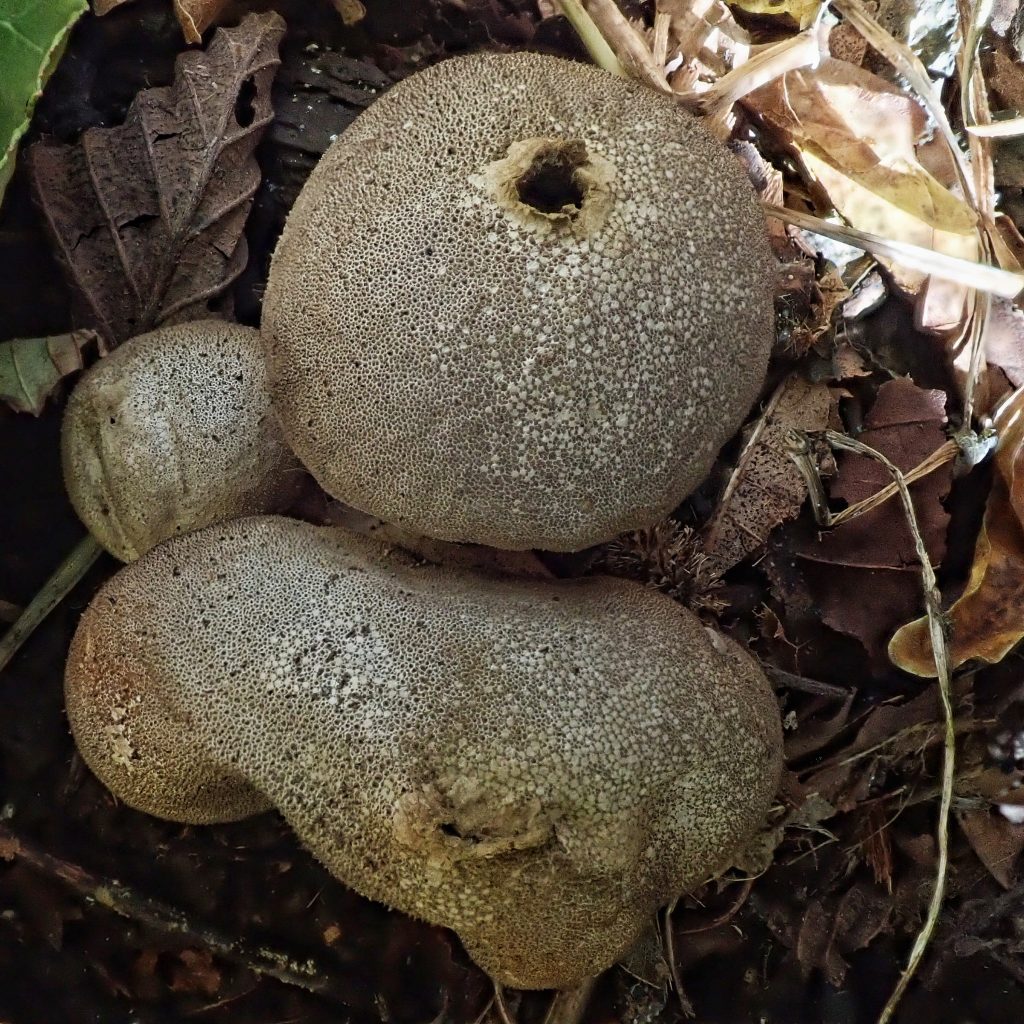
I must confess that I really struggle with identifying fungi. Many of their fruiting bodies change shape continuously from first appearance to dissolution, and they are only in their ‘classic’ form for a brief portion of their short appearance. Subtle color variations are important diagnostically for the fruiting bodies as a whole and for the spore print, which is problematic for a color blind guy like me. But things are a little more straightforward microscopically, and because of my recent fascination with Myxogastria I have now invested in some higher powered eyepieces and oil immersion equipment, so I decided to try to figure out this puffball Craig Sondergaard and I found on a recent foray. Just knowing it was one of the puffballs was a better start than I usually get, and the sterigmal fragments among the warty spores made identification of these mushrooms as Lycoperdon molle a fairly straightforward process.
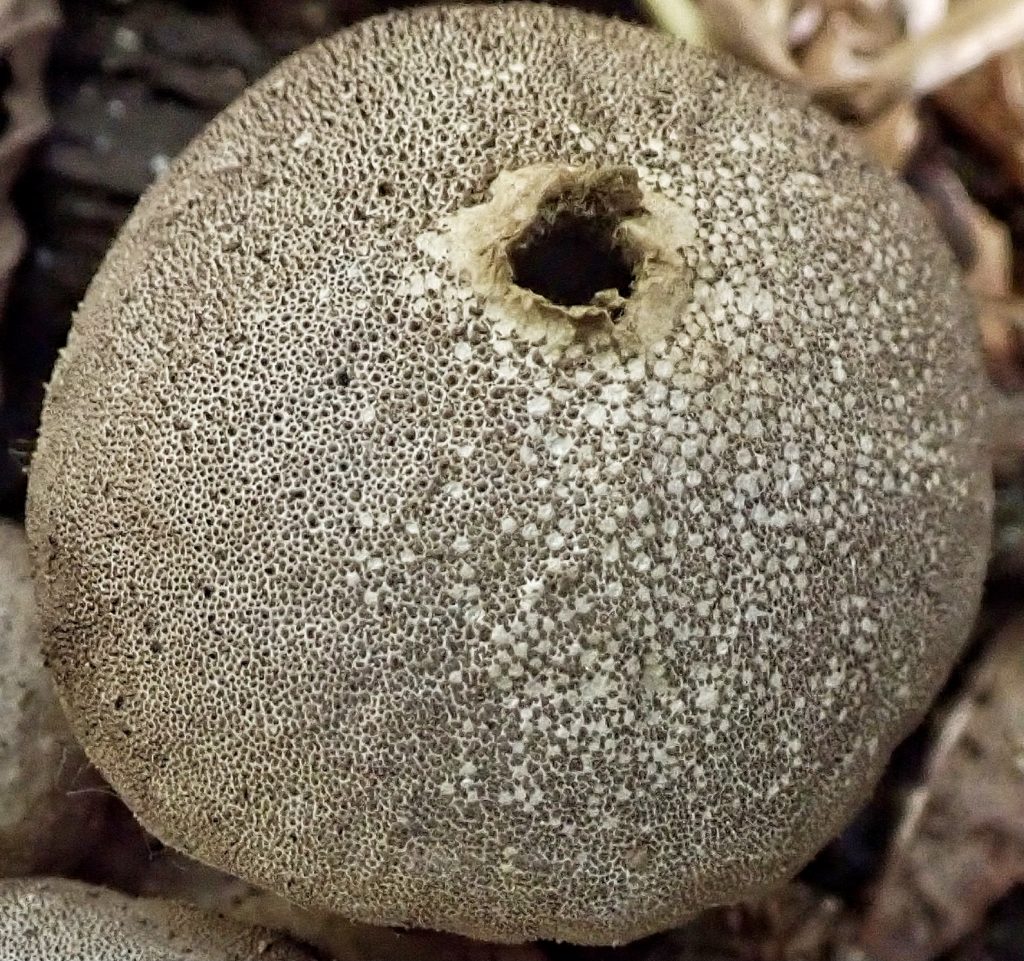
As near as I can ascertain, all of the puffballs are edible when the interior (gleba) is still pure white. Once it begins to yellow (and then to brown) it should not be consumed. Some just begin to taste bad, while others become somewhat noxious. Great care should be exercised to avoid mistaking the buttons of Amanita or other toxic species for puffballs. Merely slicing them in half and looking for a white interior is not sufficient. It must also be determined that it does not have an outline of a cap and stipe within. Unless one is absolutely certain of what type of mushroom one is looking at, it should not be consumed. And this absolute certainty precludes someone on the internet identifying it from a photo, or some self professed ‘expert’ saying, “Well I think it might be…” As a wise aunt once told me, “There are old mushroom pickers, and there are bold mushroom pickers, but there are no old, bold mushroom pickers.” Which is not to reinforce any fungal phobias. Most mushrooms are safe, at least in small quantities, and many sensible and knowledgable mycologists actually take a tiny bite of unknown mushrooms, taste it with the tip of the tongue, and then spit it out. But as a general rule I don’t think anyone ever went wrong not eating things when they don’t know what they are.
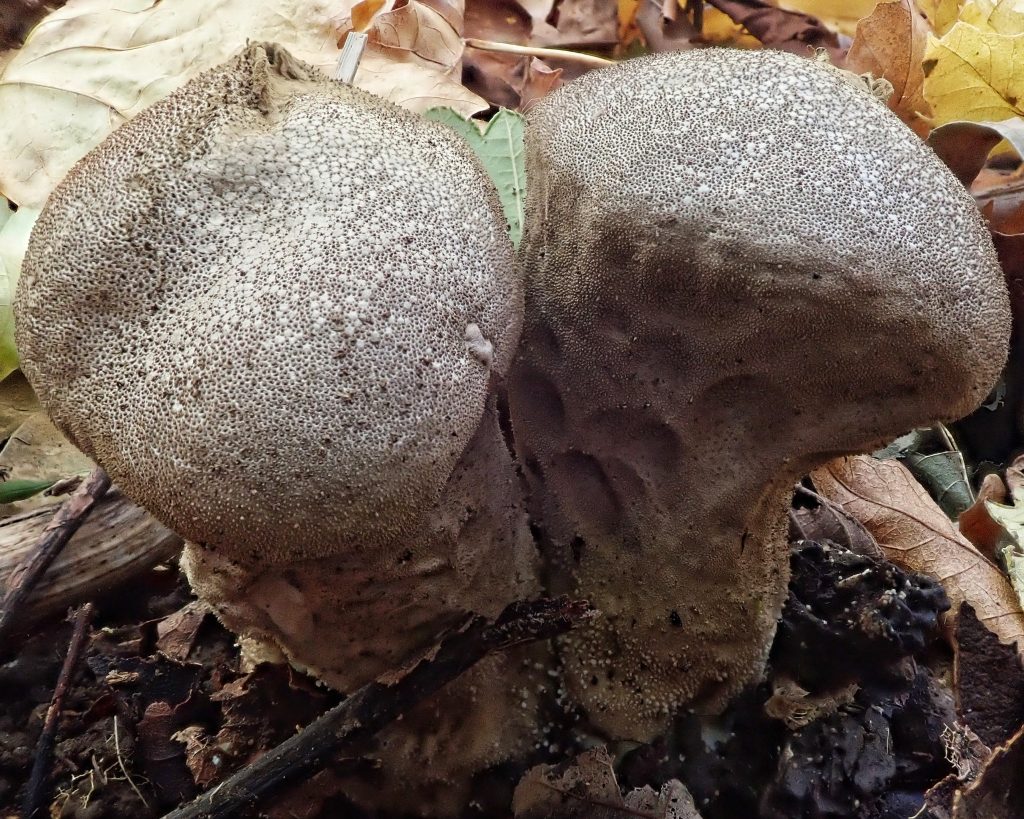
Description-Fairly large (up to 3.25” tall by 2.75” wide) cream colored (turning tan or greyish brown with maturity) puffball with short, fine spines that are often fused at the tips; ragged hole opens at apex when spores are mature; spores 4-5μm, distinctly warty; slide preparation have (usually abundant) sterigmal fragments;
Similar species-Slide preparations of other Lycoperdon lack sterigmal fragments; Lycoperdon nigrescens and L. umbrinum are darker in color with longer, thicker spines; Apioperdon pyriforme grows on wood; Lycoperdon perlatum has large and small conical warts that leave shallow depressions when they fall off.
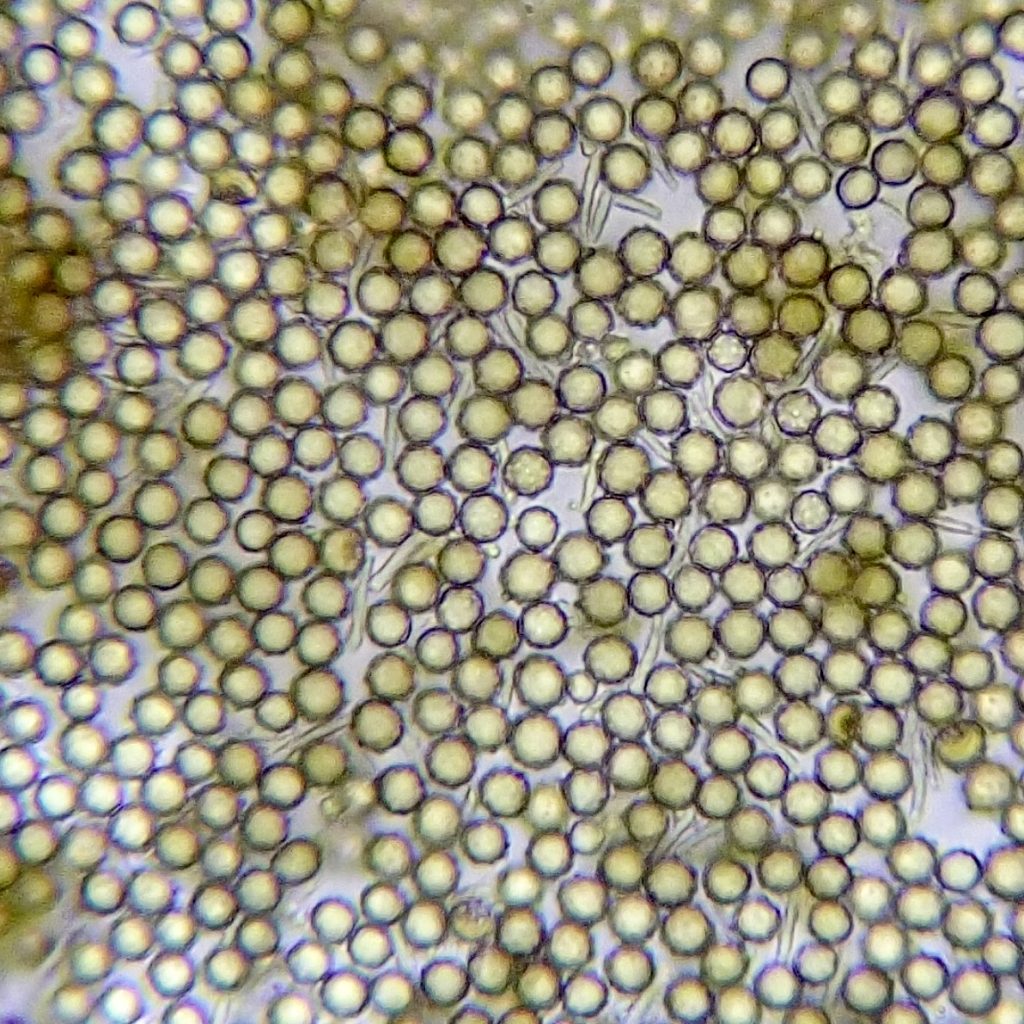
Habitat-On soil and in leaf litter of moist to mesic hardwood, conifer, and mixed forests and woodlands
Range-Temperate parts of North America and Europe; probably region wide in appropriate habitat.
Reproductive timing-Late summer through fall, and sometimes in spring.
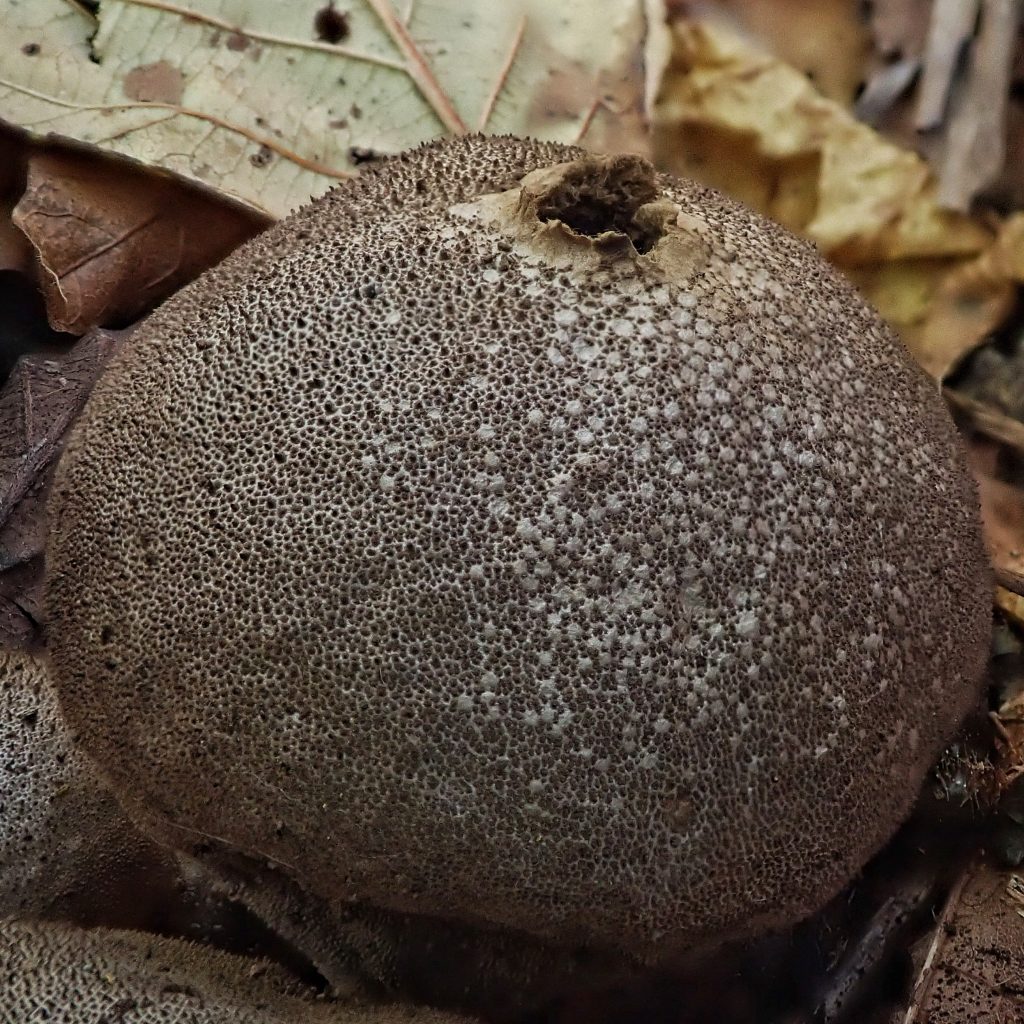
Eaten by-probably slugs, snails, and some beetles in the families Leiodidae, Staphylinidae, Endomychidae, Tenebrionidae, and Erotylidae amongst others; probably larvae of flies in Mycetophilidae and Phoridae; and small mammalian herbivores; it’s likely that many of the vast number of spores are consumed by woodlice and springtails.
Etymology of names–Lycoperdon is, as ridiculous as this seems, from the Greek words for ‘wolf farts’. One source claimed it is related to the smell, but it just smells fungusy to my nose. Another source claims the colloquial European name for puffballs sounds like ‘wolf farts’, and that that interpretation was latinized into Lycoperdon. The specific epithet molle is from the Latin for ‘soft’, and alludes to the fact that this puffball’s spines are not as sharp as most others.
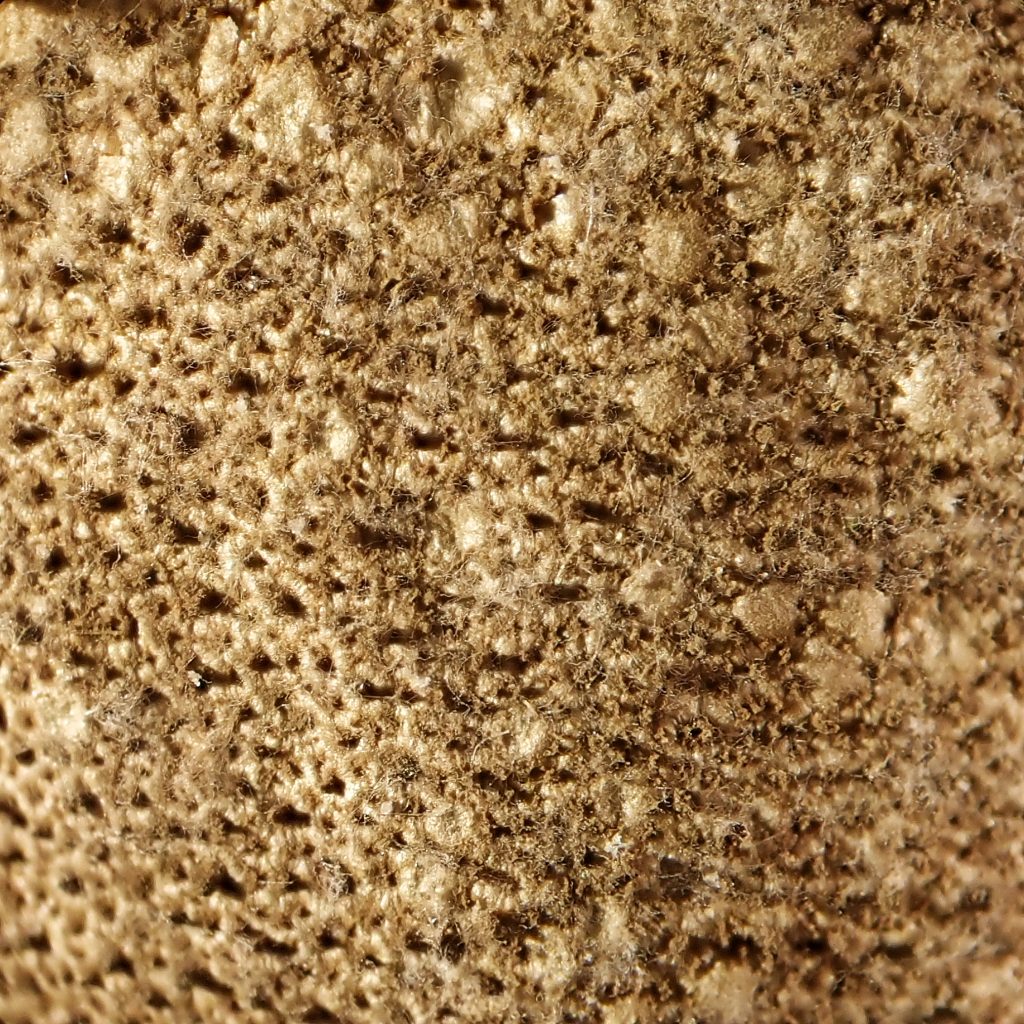
https://www.mykoweb.com/CAF/species/Lycoperdon_molle.html
http://linnet.geog.ubc.ca/Atlas/Atlas.aspx?sciname=Lycoperdon%20molle
https://mushroomobserver.org/name/show_name_description/13569
https://www.mssf.org/cookbook/puffballs.html
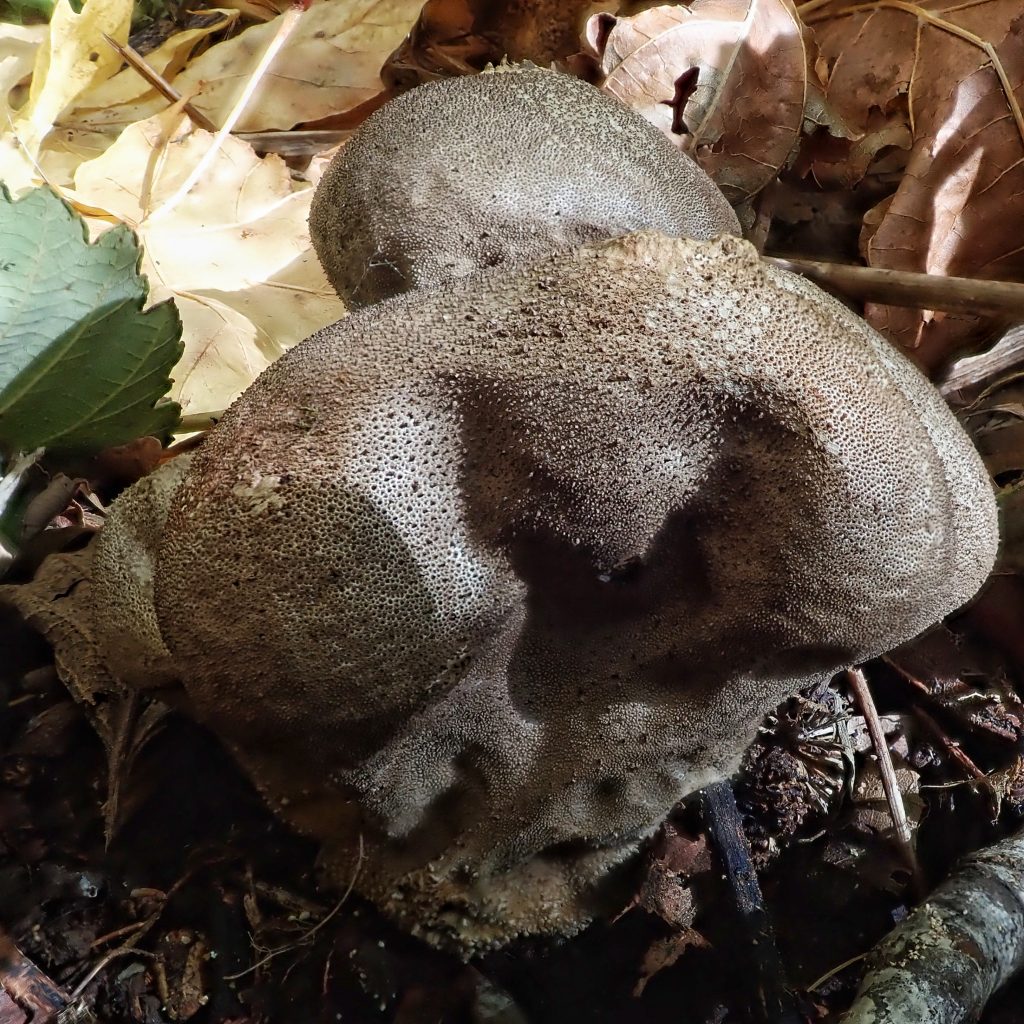
In French, puffballs are called “vesse-de-loup,” a replication of the meaning of the Greek “lycoperdon.”
BTW, Lycoperdon pyriforme has been moved to Apioperdon.
Thanks, I’ll change that.
So, that would be ‘pear fart’?
Some questions should not be asked.
Nice struggle; sterigmal fragments on soft wolf farts, indeed
And mimsy were the borogroves, Ray